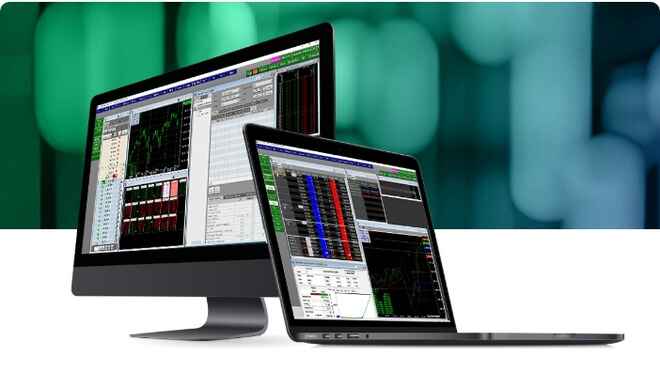What is Fibonacci Retracement Trading?
Fibonacci retracement trading a popular technical tool used by traders to determine price action. Fibonacci retracement trading is taking two extreme points from a contract’s price, usually a high and a low, then dividing it by a Fibonacci ratio to determine support and resistance levels.
What Are Fibonacci Retracement Levels and Ratios?
Fibonacci retracement levels are horizontal lines on an asset’s chart that indicate where support are resistence have the highest probabilty of occuring. Fibonacci levels work concurrently with predetermined percentages or Fibonacci ratios which show the amount an asset has previously retraced. The Fibonacci ratios are 23.6%, 38.2%, 61.8%, and 78.6%. Fibonacci retracement is useful because it’s a helpful tool to find patterns of movement and retracement between the highs and lows of an asset or contract. A Fibonacci level is created by taking two points from a chart, usually a high and low, and dividing those numbers by one of the ratios to create a key level.
For example, lets say the price of a gold contract rises $100 dollars. Gold then falls $38.20, or 38.2%. That 38.2% is a Fibonacci number and will then give the trader a better idea of where he or she thinks gold will do next. It may sound crazy that an contract will fall exactly 38.2%, but it happens quite a bit. There is a reason the above percentages are the ones traders look for, they happen all the time.
How Are Fibonacci Retracement Levels Used in Trading?
Fibonacci retracement levels are used by many technical traders because they are a proven time tested tool, that have a reputation that speaks for themselves. Once a trader calculates the key retracement levels by using the aforementioned ratios, they create these horizontal lines on an asset or contract’s chart. Each horizontal line represents a key Fibonacci retracement level. A trader can study these levels and predict where the next move will go. For instance, say the price retraced to the 23.6% level, a trader can look at the chart and chart history of that contract and see “okay the last time this conract retraced to the 23.6% level, it went up X amount before it retraced again”. The trader can than take that knowledge and attempt to take advantage of the price increase they believe will happen. Its not fool proof, but it is very effective.
How to Trade Fibonacci Extension Levels
In addition to Fibonacci retracement levels, traders may also use Fibonacci extension levels, which are levels a trader believes the price will extend once retracement in finished. Once again Fibonacci extension levels are calculated based upon predetermined ratios. The most common extension ratios are 61.8%, 100%, 161.8%, 200%, and 261.8%. These percentages are used to draw extension levels on the chart, and these extension levels indicate where the price could go in the next wave of movement. There are are three levels on a chart drawn as extension levels, those being the beginning, middle, and end of expected price movemtn following retracement. A trader will draw these levels based upon where he or she thinks the price will move. While Fibonacci extension is a useful tool, it is not fool proof and should be used in combination with other techincal trading strategies.
Benefits to Fibonacci Trading
While it may seem confusing at first, there a lot of benefits to Fibonacci trading. Fibonacci trading allows traders to determine stop-loss levels, set price targets, and place entry orders. For instance, say a trader notices a contract start to move higher. Then, it retraces to 38.2% Fibonacci level and starts to move higher again. Because that retracement occurred at a Fibonacci level the trader has a good idea where the price is going to move after retracement and then may decide to purchase the contract. When you break Fibonacci levels down to the bare bones, they are simply a tool that helps traders identify support and resistence levels. Through these support and resistence levels a trader can then determine exit, entry, and stop-loss levels to better benefit themselves.
How to Create a Fibonacci Trading Strategy
In order to build a Fibonacci retracement trading strategy one must first study the fiboncacci ratios and then begin to formulate how to build them as levels onto a contract’s chart. We highly suggest anybody whether you are new or an experienced trader to reach out to one of our expert RJO Futures Brokers before attempting this on your own. They will be there to help guide you every step of the way.



